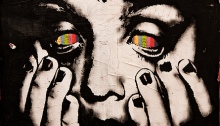Are Surveillance Technologies Really So Bad?
In 7th grade, our English teacher read us a chapter from an anthology of science fiction stories entitled 2041: Twelve Stories About the Future. In the chapter, entitled “Lose Now, Pay Later,” two kids, Deb and Trinja, stumble upon a shop at their local mall that distributes a popular new dessert, called swoodie. While the…









